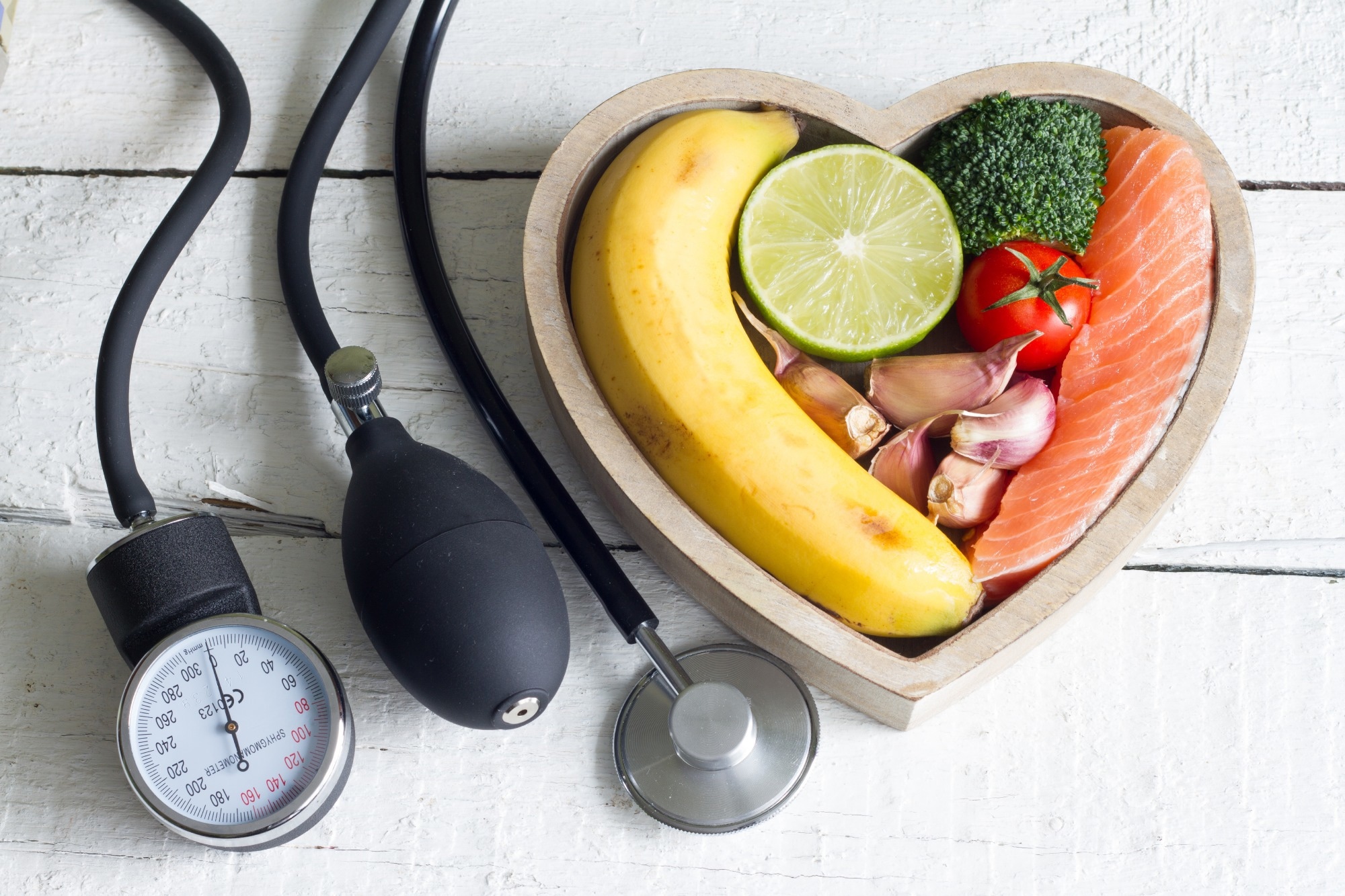Proof once again that really nothing is known about blood pressure management, certainly not after your stroke. Hope you like the guesses your doctor makes.
Dietary deep dive: Unveiling the good, the bad, and the unclear in blood pressure battleground
In a recent study published in the journal Advances in Nutrition, researchers critically assessed the impact of various dietary elements on blood pressure and hypertension risk through an umbrella review of meta-analyses from both interventional and observational studies.
 Review: The
role of diet in the prevention of hypertension and management of blood
pressure: An umbrella review of meta-analyses of interventional and
observational studies. Image Credit: udra11 / Shutterstock
Review: The
role of diet in the prevention of hypertension and management of blood
pressure: An umbrella review of meta-analyses of interventional and
observational studies. Image Credit: udra11 / Shutterstock
Background
High blood pressure (BP) is a leading contributor to cardiovascular diseases and adult mortality. A global prevalence of hypertension of 34% for men and 32% for women was observed in 2019, but fewer than half of the treated population had their hypertension controlled. The main risk factors include dietary and lifestyle habits, such as sodium intake and physical activity. While organizations like the European Society of Cardiology provide guidelines highlighting diets like the Mediterranean and Dietary Approaches to Stop Hypertension (DASH), recent studies have delved into specific food groups and nutrients' effects on BP. Further research is needed to assimilate emerging dietary insights and refine current hypertension guidelines.
About the study
The present umbrella review was carried out based on the Joanna Briggs Institute's methodology and was registered on the International Prospective Register of Systematic Reviews (PROSPERO). A precise literature search spanned databases like PubMed, Embase, Web of Science, and Cochrane Central Register of Controlled Trials until October 2021. The aim was to identify meta-analyses of both randomized controlled trials (RCTs) and observational studies concerning diet and blood pressure. Two researchers worked independently on this search, using specific search terms, focusing on human studies. A third researcher resolved any disagreements in selections.
To avoid duplications, a structured method was used to include meta-analyses. If multiple meta-analyses addressed a similar dietary exposure, the most comprehensive one was selected based on the number of primary studies, total sample size, and depth of information provided. Data extracted included author details, publication year, outcome specifics, intervention type, exposure, study design, number of participants, result types, heterogeneity analysis, effect estimates, and potential conflicts of interest. Effect sizes were visually represented using Forest plots, and dietary effects were further grouped by their impact on blood pressure, classified based on the NutriGrade system.
The quality of the included publications was gauged using the Assessment of Multiple Systematic Reviews 2 (AMSTAR 2) tool, examining various critical domains pertinent to the systematic review process. The NutriGrade system, designed to grade evidence in nutrition research, was used to assess the quality of evidence for each meta-analysis. This system evaluated multiple quality aspects of the meta-analyses, with two reviewers independently making assessments and a third resolving any disagreements. The evidence was then rated based on its quality, from high to very low, providing a comprehensive understanding of the collective research on the relationship between diet and blood pressure.
Study results
A comprehensive review, employing the PRISMA flowchart, scrutinized 17,099 records, finalizing 175 publications. These encompassed a broad spectrum of dietary factors, from meat and vegetables to beverages and macronutrients. The main contributions hailed from Europe, Asia, and North America.
The methodological robustness of the publications displayed variation. In RCTs, high-quality studies constituted 7.5%, with a descending quality observed in 43.2% moderate, 27.4% low, and 21.9% critically low. The observational studies did not reach a high-quality rating; 65.5% were deemed moderate, with 27.6% low and 6.9% critically low. Many low-quality studies were critiqued for overlooking grey literature and exhibiting biases.
The NutriGrade system identified limited high-quality RCT meta-analyses. Concerning between-study heterogeneity in RCTs, 6.5% did not acknowledge it, while 35.4% reported significant variations. Only 29.6% of RCTs bore a low risk of publication bias, whereas observational studies exhibited diverse risk profiles.
The review explored dietary regimes and their implications on blood pressure. High-quality RCT data suggested diets like DASH and ketogenic contributed positively to blood pressure control. While observational studies proffered weaker evidence for diets such as vegan and Mediterranean. Within the meat, eggs, and fish category, RCTs offered moderate evidence about fish and egg consumption, contrasting with observational studies that presented a lower quality testament for egg and meat intake.
Diving deeper, the NutriGrade system shed light on the relationship between specific foods and blood pressure. Fruits and vegetables emerged with a moderate quality endorsement, signifying potential blood pressure reduction from foods like blueberries and beetroot. Starch-rich foods garnered mostly low-quality evidence, whereas legumes presented a mixed bag, with pulses being an exception with their moderate evidence. Nuts and seeds, with a special mention of flaxseed, stood out with high-quality proof for their blood pressure-lowering capacities. Cocoa, too, had moderate supportive evidence.
In the herb domain, cinnamon reduced while licorice escalated diastolic blood pressure. Teas received moderate validation for reducing blood pressure, with coffee's influence remaining ambiguous. Discussions around macronutrients highlighted proteins like L-carnitine and soy protein with favorable evidence. In contrast, the majority of fats and oils, barring a few like Eicosapentaenoic Acid (EPA), exhibited inconsistent results. Minerals also showcased variability; potassium was strongly advocated for blood pressure diminution, whereas calcium and zinc remained inconclusive.
- Ghadeer S. Aljuraiban, Rachel Gibson, Doris SM. Chan, et al. The
role of diet in the prevention of hypertension and management of blood
pressure: An umbrella review of meta-analyses of interventional and
observational studies, Advances in Nutrition, 2023, DOI- https://doi.org/10.1016/j.advnut.2023.09.011, https://www.sciencedirect.com/science/article/pii/S2161831323013844

No comments:
Post a Comment